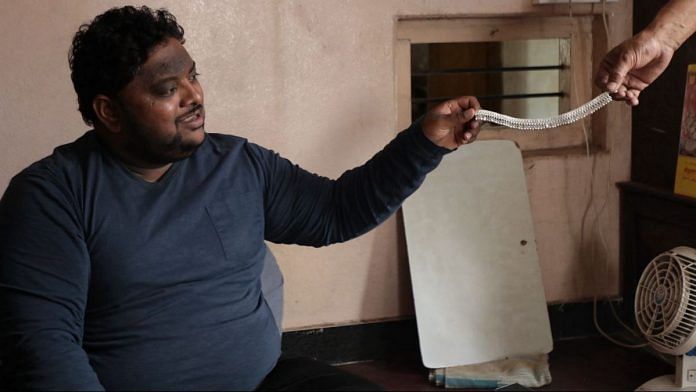Hupari, Kolhapur: At Maharashtra’s ‘silver nagri’ Hupari, the possibility of walking in the footsteps of Kolhapuri chappals is bringing back a long-lost glimmer of excitement. Artisans now hope the tinkle of traditional silver anklets will join the neighbouring city’s sandals on Prada runways—this time, with credit.
The opening came soon after Prada’s Kolhapuri-style sandals appeared in Milan Fashion Week. Amid the cultural appropriation furore, a Prada team landed in Maharashtra and discussed collaborations. One of the pitches they heard was for Hupari’s silver anklets, GI tagged in 2021. And, the luxury brand said that ‘they will consider it.’
“Prada has assured a technical team’s visit to explore collaboration possibilities with the silver artisans of Hupari soon,” said Lalit Gandhi, president of the Maharashtra Chamber of Commerce, Industry & Agriculture (MACCIA). “The industry will also get a massive and a much-needed boost if this collaboration comes through.”
It’s the best news the small town has had in a while. Hupari is one of the biggest producers of silver anklets and chains in the country, with around 200 small factories and workshops powering a cottage industry worth Rs 10,000 crore. But there’s a dark patina over it now. Orders have slowed. Workers have left. Some factories now open only once a week.
Tell me, who’s going to buy these anklets when silver prices are all over the place? Maybe someone from Prada will, otherwise they just sit locked up in the cupboard
-Deepak Desai, silver artisan and factory owner
Factory owners blame the fluctuations in silver prices and what they call the government’s stepmotherly attitude toward the trade, but consumer preferences have changed too. Demand for Hupari payals, known for their seamless filigree work, has dropped. Anklets are seen as infra dig. But international runways have revived many old trends. Styles Victorian to Mesopotamian to Roman have made a comeback. Ten years ago, it was all about chokers or ‘dog collars’. Then came the turn of belly chains in 2021, with Chanel to Dior parading them. Ear cuffs, the ‘kaffa’ of Ancient Greece, are now all the rage. It may finally be the turn of the ankle and the silver anklet.
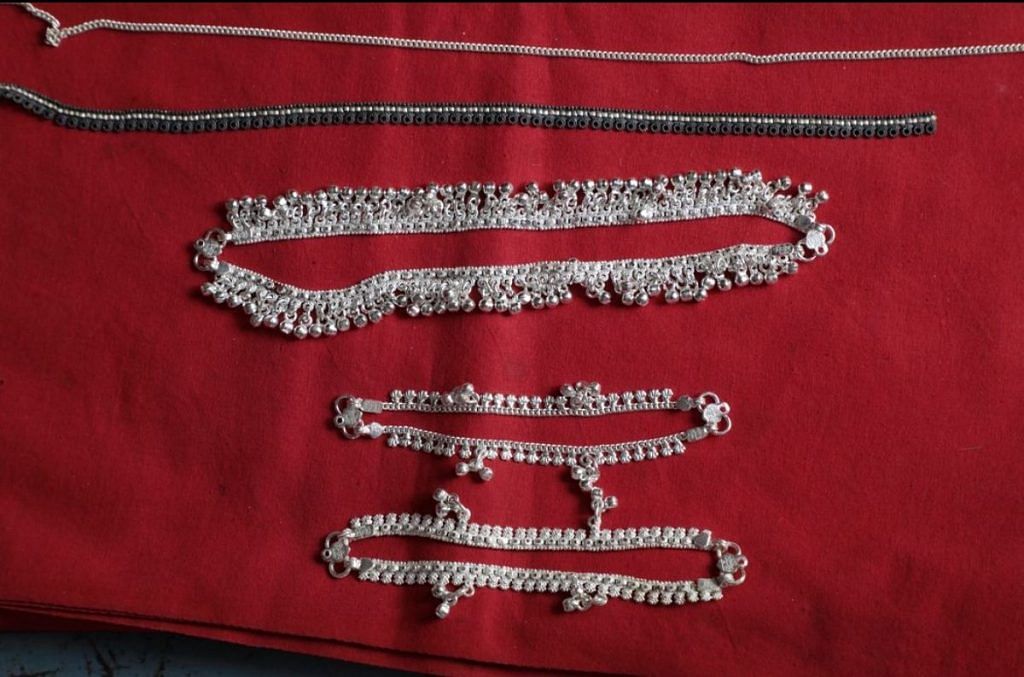
In a sweltering Hupari workshop, beads of sweat formed on artisan Sanjay Kumar Sharma’s forehead as he fed silver scraps into a melting furnace. He shifted from Agra to Hupari in 2000 to better his prospects and currently earns Rs 18,000 a month. But uncertainty has been mounting.
“We are skilled experts only in this field. But if things shut down, our income will go away,” said 49-year-old Sharma. “I can’t afford to stop. I have a family to feed. I will have to waste 3-4 years learning something new at some other factory.”
It’s much the same for the nearly 80 per cent of the families in Hupari whose livelihoods depend entirely on the silverware trade.
“We cannot risk 5,000 families getting unemployed,” said fourth-generation silver chain factory owner Praveen Chandrakanth Chokle. “We will accept the collaboration with open arms. It will benefit us a lot.”
Also Read: Prada’s Milan misstep can bring Kolhapuris back on their feet. Chappal Gali has new hope
Timeless tradition vs ‘symbol of patriarchy’
For the past 34 years, Aparna Kadam’s deft fingers have shaped silver into delicate patterns using the traditional art of filigree. She has made thousands of anklets with twisted wire patterns and tiny bells that jingle softly.
“There was a time when orders came pouring in,” she said, while returning from prayers for prosperity and wellbeing performed here traditionally on rainy days. “We used to make as much as Rs 15,000 in some months.”
Today, Kadam completes just two to three anklets a day, earning between Rs 3,000 and Rs 4,000 a month. Her husband works in a nearby silver factory, specialising in soldering— melting silver to join pieces together.
“He’s burned his hands many times,” she said. “Factory owners arrange some basic treatment, and then he’s back to work. There are no proper safety protocols, but that’s how it has always been. Our fathers, grandfathers, even great grandfathers worked like this.”
It’s important to honour traditional crafts and the stories behind them, but it’s equally crucial to modernise these pieces to keep them relevant for today’s audience and market
-Diksha Singhi, Mumbai-based jewellery entrepreneur
Factories typically purchase silver in large 30kg blocks. Based on their production needs, a portion of the block is cut and melted in a furnace. The molten silver is then poured into thin-slab moulds, where it quickly solidifies. These hot slabs are immediately dipped in water, then passed through rolling machines to achieve the desired thickness—depending on the type of anklet being made.

While men usually handle the physically demanding factory work like melting, rolling, and soldering, it is often women like Kadam who focus on the finer detailing: shaping wire, attaching tiny bells, and arranging motifs. Prices vary by weight and design. A basic anklet starts around Rs 1,500, while ornate bridal pieces can cost up to Rs 32,000.
While the roots of the silver craft here go back centuries, Hupari’s identity is said to have crystallised in 1904, when a goldsmith named Krishanji Ram Chandra Sonar switched to silver. The trade grew further in the 1940s with the arrival of rolling machines. Usually worn during weddings, festivals, and dance performances, the anklets are known for traditional Maharashtrian motifs like pan (betel leaf), badam (almond), champak, and ambi (mango). While the GI tag was granted for Hupari silver crafts in general, it’s the anklets that were known far and wide, with customers in Uttar Pradesh to Gujarat to Madhya Pradesh.
But these traditional designs do not always connect with the urban market.
For Mumbai-based jewellery entrepreneur Diksha Singhi, the anklet’s fall from grace isn’t just about price or demand cycles, but about changing value systems.
“Most working women don’t wear them to the office. Even homemakers don’t want to wear it,” said the 26-year-old. “Anklets are mostly reserved for festivals now. With fast-forward fashion trends, a new design takes over the market every season.”
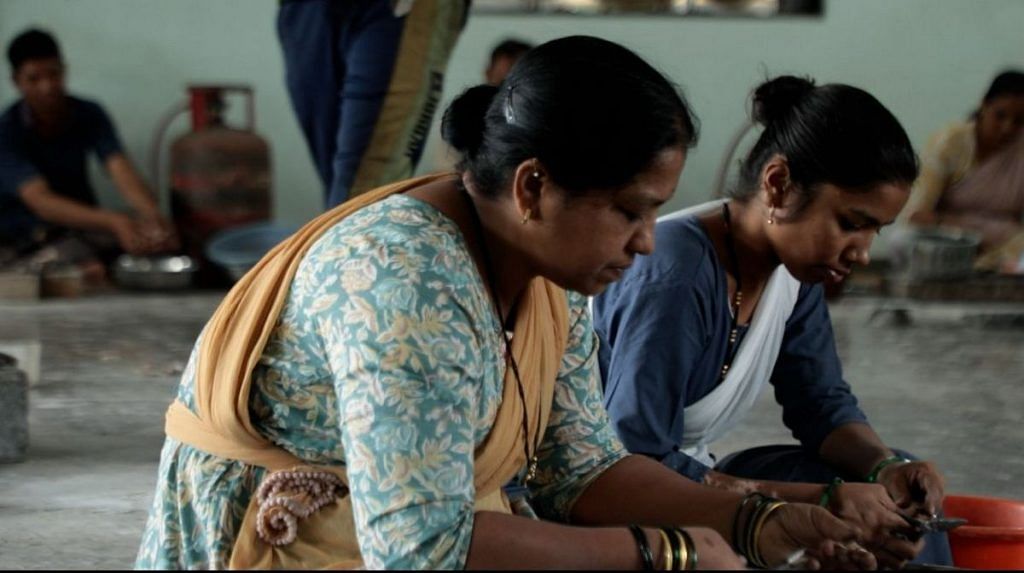
She also noted that many younger women view traditional anklet styles as “symbols of patriarchy”, which contributes to their growing disconnect from such ornaments.
“It’s important to honour traditional crafts and the stories behind them,” she said. “But it’s equally crucial to modernise these pieces to keep them relevant for today’s audience and market.”
But, back in Hupari, Aparna Kadam said that the charm of traditional ornaments never fades away.
“Modern designs come and fade away. Traditional designs have survived for long.There must be some reason behind it,” Kadam said.
Many artisans, though, are pivoting.
New footholds
With his glasses perched on his nose, Deepak Desai, in his 50s, works with quiet intensity at a press machine, embossing small cow designs onto silver plates. He is the only craftsman in Hupari who makes ramakadas — miniature silver animals known as chandi ke khilone.
“I run my house, my factory, and pay my staff from these ramakadas only,” said the second-generation artisan. “The anklet business has collapsed.”
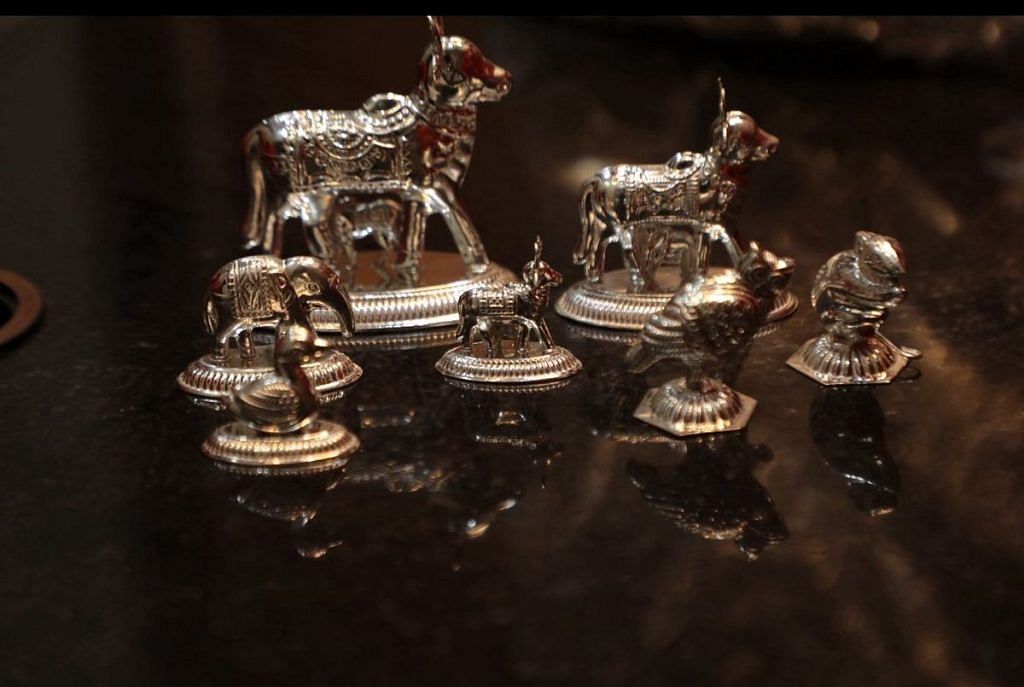
Desai’s family legacy was once rooted in anklets. Until two years ago, his workshop used to produce 4-5 kg of silver anklets daily. Now, the shutters of the anklet facility go up just once a week. The clinking of metal has been replaced by silence.
Desai sensed the decline of the anklet business coming a decade ago. Back in 2015, he built a three-storey, 20-by-20-foot factory next to his original workshop, dedicated entirely to ramakadas.
“As long as people have faith in religion, this business won’t die,” he said. “People may stop wearing silver because of rising costs, but they will never stop buying these animals for temples, rituals, and gifts.”

Ramakadas weighing 20 gm or thereabouts retail for around Rs 2,000-2,800, depending on the detailing.
On the ground floor, Desai and three other artisans press animal motifs onto silver plates and cut them into shape. One floor above, in a large, mostly bare room, eight workers sit cross-legged at their soldering stations—each with a crucible, tongs, a torch, and a soldering surface. This is where the brazing process unfolds, as they carefully assemble and polish the ramakadas.
Desai currently employs around 25 artisans, including 10 women. The children in his family are also learning the business hands-on.
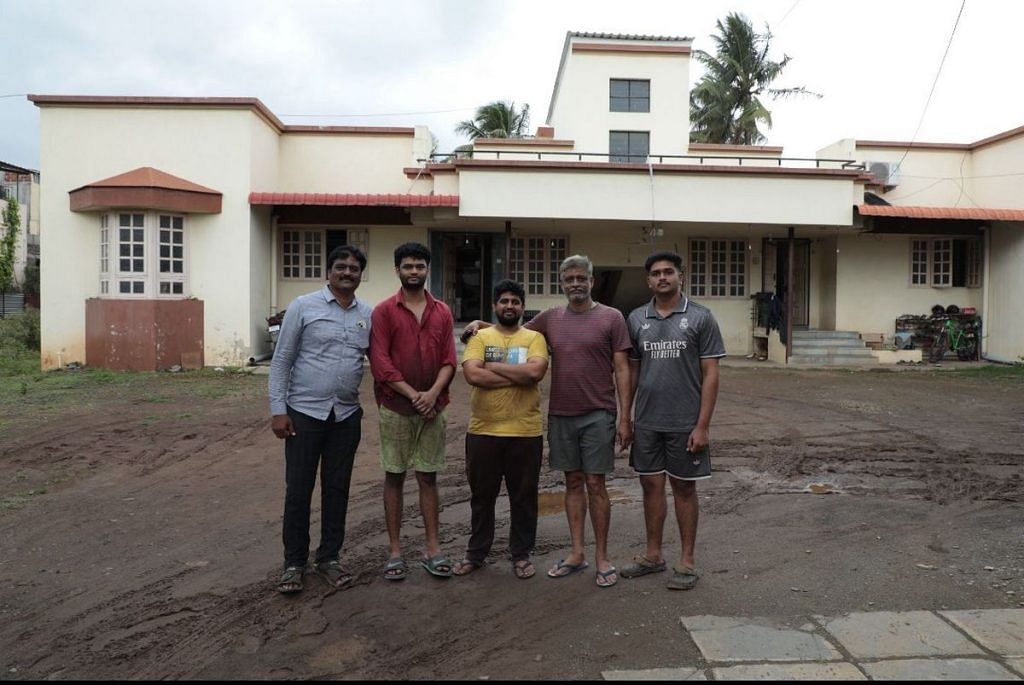
“I have set up the ramakada factory for the third generation,” said Desai, whose son is studying mechanical engineering in Kolhapur. “It is for their secured future. Now, it’s up to them how they further modernise it with better machinery and functioning.”
But the relative success of his ramakada business doesn’t mean all his troubles are over. Silver prices have shot up drastically in the last six months, from Rs 75,000 to over Rs 1 lakh.

“We supply to wholesalers, who sell to retailers,” Desai said. “But with silver prices soaring, customers aren’t buying from retailers. As a result, retailers aren’t ordering from wholesalers, and the wholesalers stop placing orders with us. The entire supply chain comes to a standstill.”
The uncertainty shrouding the business is also keeping the younger generation of artisan families away from the trade. Many are turning to other kinds of factory work, seen as more stable and less risky than silver.
“Metal casting factories are starting to emerge in Hupari,” said Desai. “Many have moved away from the silverware trade and joined casting units instead, as they see it as more stable and sustainable.”
Also Read: Does GI tag bring more business? Mysore silk & Jardalu mango rose, not Kannauj attar
Power cuts to Prada
A fourth-generation silver chain factory owner, Praveen Chandrakanth Chokle has had to shrink his workforce from 20 to 12 over time. Many other factory owners, too, are struggling to meet wage demands. He doesn’t blame the young for turning away from silverwork. The conditions, he said, speak for themselves.
The GI tag was supposed to increase marketability and fetch artisans better prices, but they say they haven’t seen any material difference. All they know is that sales have been falling.
“We haven’t benefitted anything from the GI tag,” said Deepak Desai. “It’s just there—we know our anklets are GI tagged. But nothing in the name of benefits.”
Modern designs come and fade away. Traditional designs have survived for long.There must be some reason behind it
-Aparna Kadam, silver anklet artisan
Factory owners also complain that they see little in the way of government support.
“Whatever this industry is today, it’s purely due to the hard work of the people here,” Chokle said.
Infrastructural issues are another sore point. Desai pointed out that the 200 silverware factories in and around Hupari are hit regularly by power cuts that disrupt operations.
“They don’t just slow down production, they ruin it,” he said. One of the biggest challenges arises during the soldering process. If the power goes out midway, the molten silver hardens and gets stuck in the machine, making it impossible to pick up where the work left off.
“In such cases, we have no choice but to start the entire process from scratch,” he added. Unreliable infrastructure alone is responsible for lakhs worth of silver wasted, time lost, and energy drained, according to artisans.
But now, for the first time in years, there’s something to talk about beyond silver prices and patchy electricity. Prada and Milan have entered the vocabulary.
Desai steps into his now-quiet anklet workshop, unzips a transparent plastic bag filled with anklets, and neatly lines up the different styles crafted by his artisans. Then, he pulls out his phone—cluttered with trade apps—to check the fluctuating silver rates. It was Rs 1,15,000 per kilogram that day.
“Tell me, who’s going to buy these anklets when silver prices are all over the place?” he said. “Maybe someone from Prada will, otherwise they just sit locked up in the cupboard.”
(Edited by Asavari Singh)


